
La Boca: The Vibrant Heart of Buenos Aires
Explore La Boca, Buenos Aires: A vibrant neighbourhood known for its colourful streets, rich cultural history, live tango performances, and the legendary Boca Juniors stadium.
La Boca is a colourful and lively neighbourhood in Buenos Aires that has become a must-visit destination for tourists. Known for its vividly painted buildings, street art, and tango dancing, La Boca offers a unique blend of culture, history, and entertainment. The neighbourhood's most famous street, Caminito, is an open-air museum where you can stroll past brightly coloured houses, watch live tango performances, and browse through a variety of artisan shops and galleries. The neighbourhood has a rich history rooted in its immigrant past, particularly from Italian settlers who arrived in the late 19th century. This influence is evident in the architecture, cuisine, and overall atmosphere of La Boca. Visitors can enjoy authentic Argentine dishes at local restaurants while listening to traditional music, creating a truly immersive cultural experience. La Boca is also home to the iconic Boca Juniors football club, and a visit to the legendary La Bombonera stadium is a must for sports enthusiasts. The stadium offers tours that provide insights into the club's history and the passionate world of Argentine football. Whether you're an art lover, a foodie, or a football fan, La Boca has something to offer everyone.
Local tips in La Boca
- Visit Caminito during the day to enjoy the vibrant street art and live performances.
- Try to visit on a non-match day for a less crowded tour of La Bombonera stadium.
- Carry some cash as some local shops and eateries may not accept credit cards.
- Be cautious of your belongings, as the area can get crowded with tourists.
- Don't miss out on trying local delicacies like empanadas and choripán from street vendors.
La Boca: The Vibrant Heart of Buenos Aires
La Boca is a colourful and lively neighbourhood in Buenos Aires that has become a must-visit destination for tourists. Known for its vividly painted buildings, street art, and tango dancing, La Boca offers a unique blend of culture, history, and entertainment. The neighbourhood's most famous street, Caminito, is an open-air museum where you can stroll past brightly coloured houses, watch live tango performances, and browse through a variety of artisan shops and galleries. The neighbourhood has a rich history rooted in its immigrant past, particularly from Italian settlers who arrived in the late 19th century. This influence is evident in the architecture, cuisine, and overall atmosphere of La Boca. Visitors can enjoy authentic Argentine dishes at local restaurants while listening to traditional music, creating a truly immersive cultural experience. La Boca is also home to the iconic Boca Juniors football club, and a visit to the legendary La Bombonera stadium is a must for sports enthusiasts. The stadium offers tours that provide insights into the club's history and the passionate world of Argentine football. Whether you're an art lover, a foodie, or a football fan, La Boca has something to offer everyone.
Iconic landmarks you can’t miss
Museo de la Pasión Boquense
Discover the heart and history of Boca Juniors at Museo de la Pasión Boquense, a vibrant tribute in Buenos Aires' iconic La Boca neighborhood.

Caminito
Experience the vibrant colors, rich culture, and lively tango performances of Caminito, the iconic street museum in La Boca, Buenos Aires.

La Vuelta de Rocha
Explore La Vuelta de Rocha in Buenos Aires, a historical waterfront site rich in culture, art, and stunning views of the city's vibrant heritage.
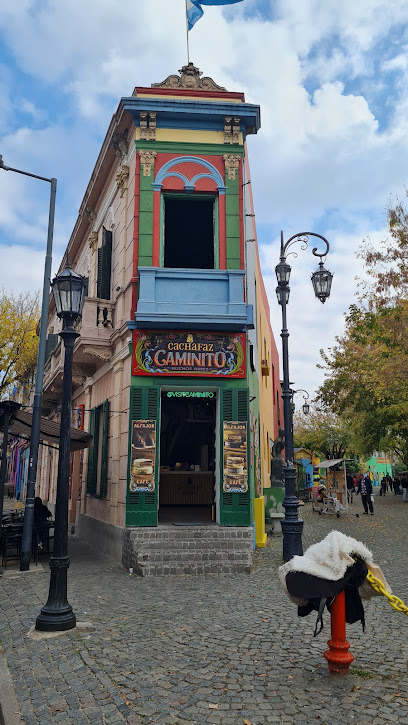
La Boca - Gral. Gregorio Aráoz de Lamadrid
Discover the vibrant colors, rich culture, and lively tango of La Boca, Buenos Aires – a must-visit destination for every traveler.

La Boca Walking Tour
Explore the colorful streets of La Boca, Buenos Aires, where art, tango, and history come alive in a vibrant walking tour.

Ghost Tower
Discover the haunting beauty of Buenos Aires' Ghost Tower, a symbol of architectural ambition and urban exploration in La Boca's vibrant landscape.

MARCO Museo de Arte Contemporáneo de La Boca
Explore the vibrant world of contemporary art at MARCO Museo de Arte Contemporáneo de La Boca, a cultural hotspot in Buenos Aires.

Mural República de la Boca
Explore Mural República de la Boca, a vibrant testament to Buenos Aires' artistic spirit, steeped in culture and history.

Antiguo Mercado De la Boca
Discover the lively Antiguo Mercado De la Boca in Buenos Aires, where culture, cuisine, and crafts converge in a vibrant market experience.
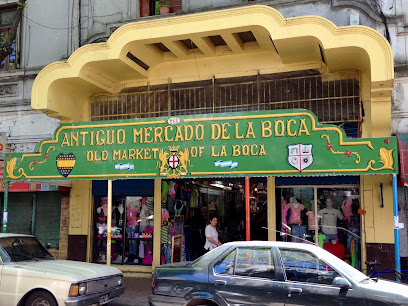
Puerto De La Boca
Experience the heart of Buenos Aires at Puerto De La Boca, where authentic Argentine cuisine meets vibrant local culture in La Boca.

La Boca Buenosaires Caba
Experience the vibrant culture, art, and tango of La Boca, Buenos Aires, a colorful neighborhood bursting with history and life.

Mi Foto De Boca
Explore Mi Foto De Boca, a vibrant tourist attraction in Buenos Aires, where colorful murals and tango culture come alive for unforgettable memories.

La boca
Discover La Boca, a historical gem in Buenos Aires filled with vibrant colors, tango culture, and delicious Argentine cuisine.

Maqueta Barrio La Boca
Experience the colorful charm of Maqueta Barrio La Boca, a vibrant cultural hub in Buenos Aires filled with art, tango, and delightful cuisine.

Museo histórico de La Boca
Explore the vibrant history of La Boca at the Museo Histórico de La Boca, a cultural gem showcasing the heritage of Buenos Aires.

Unmissable attractions to see
Plaza Dorrego
Explore the vibrant atmosphere of Plaza Dorrego, a historic square in Buenos Aires filled with culture, tango, and local charm.

Museo de la Pasión Boquense
Explore the passionate world of Boca Juniors at Museo de la Pasión Boquense, a unique museum celebrating Argentina's iconic football club.

Benito Quinquela Martín Museum
Explore the artistic legacy of Argentina at the Benito Quinquela Martín Museum in La Boca, where vibrant colors and rich culture come alive.

La Boca - Gral. Gregorio Aráoz de Lamadrid
Discover the colorful charm of La Boca, Buenos Aires, where vibrant street art, tango, and delicious cuisine come together in a rich cultural experience.

Ghost Tower
Unravel the mystery of the Ghost Tower in Buenos Aires, an architectural relic offering haunting beauty and stunning city views.
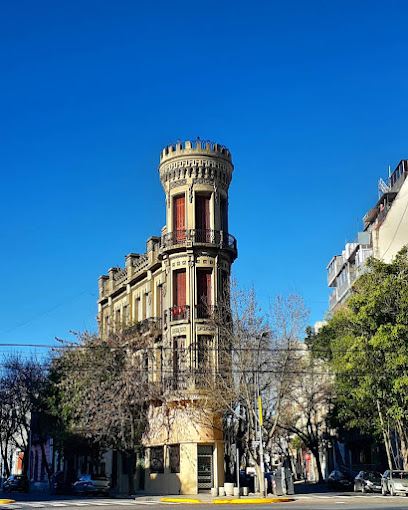
Mural República de la Boca
Explore the vibrant Mural República de la Boca, a cultural gem in Buenos Aires, showcasing stunning artistry and the lively spirit of La Boca.

Museum of Fine Arts Outdoor - Caminito
Experience the vibrant colors and rich culture of Caminito in La Boca, Buenos Aires - an outdoor museum that captivates with art, dance, and history.

Maqueta Barrio La Boca
Discover the colorful streets and rich cultural heritage of Maqueta Barrio La Boca, a vibrant Buenos Aires neighborhood brimming with art, tango, and tradition.

La Flor de la Vida.
Discover the vibrant art scene and local culture at La Flor de la Vida, a must-visit tourist attraction in Buenos Aires that celebrates creativity and community.

Cuadro del Diego
Immerse yourself in the artistic spirit of Buenos Aires at Cuadro del Diego, a vibrant cultural hub in the heart of La Boca.

Essential places to dine
El Gran Paraiso
Experience authentic Argentinian cuisine at El Gran Paraiso in La Boca - where flavor meets tradition.

El Obrero
Discover authentic Argentinian cuisine at El Obrero in La Boca - a culinary haven blending tradition and flavor.

Il Matterello La Boca
Experience authentic Italian flavors at Il Matterello La Boca, where culinary excellence meets the vibrant spirit of Buenos Aires.
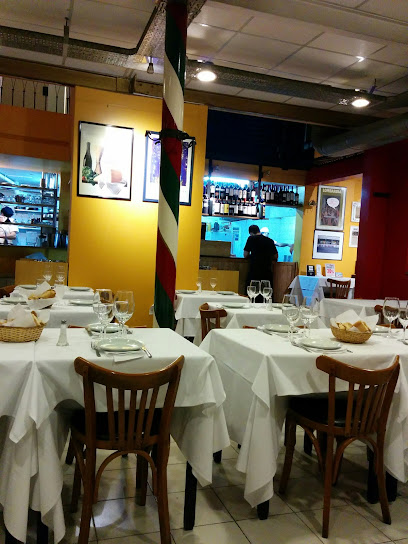
La Glorieta de Quique.
Experience authentic Argentine cuisine at La Glorieta de Quique in Buenos Aires' vibrant La Boca neighborhood.

Puerto Viejo
Experience authentic Argentinian flavors at Puerto Viejo in La Boca – where culinary tradition meets vibrant culture.
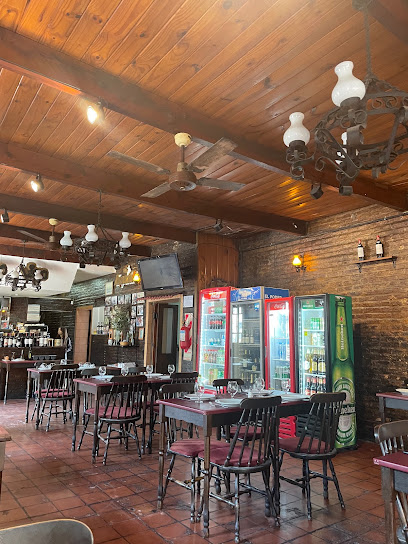
La Ribera Caminito
Experience authentic Argentine flavors at La Ribera Caminito in Buenos Aires – where every bite tells a story amidst vibrant culture.

Bodegón La Buena Medida
Experience authentic Argentine cuisine at Bodegón La Buena Medida, where tradition meets flavor in every dish.

Bar Portuario
Discover authentic Argentine cuisine at Bar Portuario in La Boca - where vibrant flavors meet welcoming hospitality.

El Rinconcito
Experience authentic Argentine cuisine at El Rinconcito in La Boca, where every meal is a celebration of local flavors and culture.

Puerto De La Boca
Discover authentic Argentine cuisine at Puerto De La Boca in Buenos Aires – where flavor meets culture in a vibrant setting.

Markets, malls and hidden boutiques
Boca Shop
Explore Boca Shop in La Boca, Buenos Aires – your destination for authentic sporting goods and a taste of Argentine sports culture.

Solo Boca Tienda
Explore Solo Boca Tienda, the ultimate destination for sports memorabilia and art in La Boca, Buenos Aires, where passion meets culture.

Artesanía Caminito
Explore the colorful world of Artesanía Caminito: a gem in La Boca offering authentic Argentine crafts and souvenirs.

Paseo de Compras Caminito Shopping
Explore the colorful and vibrant Paseo de Compras Caminito Shopping in Buenos Aires for a unique shopping and cultural experience.
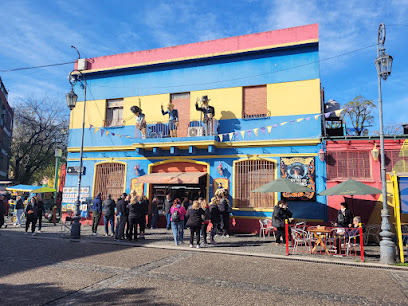
Todo Boca
Discover unique Argentine gifts at Todo Boca in La Boca, Buenos Aires, where vibrant culture meets artisan craftsmanship for the perfect souvenir.

Tienda PARAISO XENEIZE
Explore the vibrant Tienda PARAISO XENEIZE for unique Argentine gifts and immerse yourself in the culture of Buenos Aires' iconic La Boca district.

Boutique Fedra
Explore Boutique Fedra in La Boca, Buenos Aires, where unique Argentine fashion meets vibrant culture and artistic flair.

Shopping Caminito
Explore the vibrant Shopping Caminito in La Boca for unique Argentine gifts and an authentic cultural experience.

Brandsen Pasion Souvenirs
Explore a vibrant collection of unique souvenirs and artisan crafts at Brandsen Pasion Souvenirs in the heart of La Boca, Buenos Aires.

Souvenirs
Discover the vibrant gift shops of Buenos Aires in La Boca, where art and culture come together in unique souvenirs and local treasures.

Essential bars & hidden hideouts
Kraken bar
Experience the vibrant nightlife at Kraken Bar in Buenos Aires, where delicious tapas and a lively atmosphere await you.

El Federal Bar
El Federal Bar: A Culinary Gem in San Telmo, Buenos Aires, Blending Tradition and Vibrancy in Every Bite.

La Puerta Roja
Experience the vibrant nightlife of Buenos Aires at La Puerta Roja, a cultural bar in the heart of San Telmo with delightful drinks and a lively atmosphere.

Valhalla
Immerse yourself in the vibrant Norse culture at Valhalla, Buenos Aires' premier medieval-themed bar for food and drinks.

The Gibraltar
Discover the energetic vibe of The Gibraltar, a popular bar and grill in Buenos Aires, offering delicious food and a lively atmosphere perfect for relaxation.

MARGAL CERVECERIA
Discover the vibrant craft beer scene at Margal Cervecería in La Boca, where great brews and delicious food come together in a lively atmosphere.
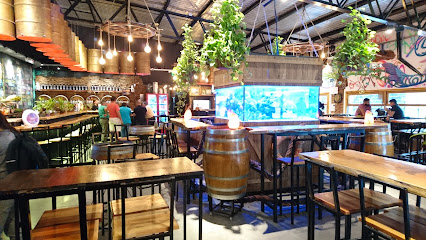
Bar Britanico
Experience the vibrant atmosphere and local flavors at Bar Británico, a historic gem in Buenos Aires' San Telmo neighborhood.
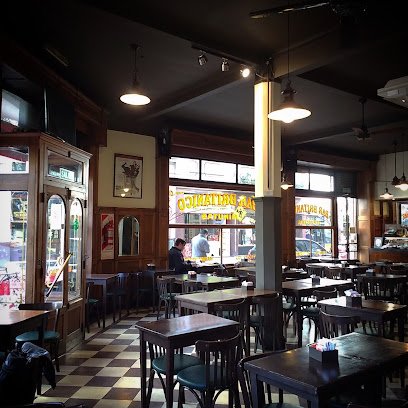
Encuentro Nativo
Experience the authentic flavors of Argentina at Encuentro Nativo, where traditional grilling meets a vibrant culinary culture in Buenos Aires.

Doppelganger Bar
Experience innovative cocktails and vibrant nightlife at Doppelganger Bar, a hidden gem in Buenos Aires’ San Telmo neighborhood.

Bar Chin Chin
Experience the vibrant spirit of Buenos Aires at Bar Chin Chin, where local drinks and lively atmosphere unite in San Telmo.

Granados bar & rest
Experience the vibrant nightlife at Granados Bar & Rest in San Telmo, Buenos Aires, where local flavors and a lively ambiance come together.

La Glorieta de Quique.
Discover the essence of Argentinian cuisine at La Glorieta de Quique in the heart of Buenos Aires' vibrant La Boca district.

The Malin Head
Discover The Malin Head in Buenos Aires - a lively pub with craft drinks, delicious food, and vibrant nightlife.

Boca a Boca - Restaurante Show
Experience the vibrant flavors of Buenos Aires at Boca a Boca - a lively bar and restaurant in the heart of La Boca, where culture meets culinary delights.

History of La Boca
-
La Boca was founded in the 19th century, primarily as a port for the burgeoning city of Buenos Aires. The neighborhood's name, meaning 'the mouth' in Spanish, refers to its location at the mouth of the Riachuelo River. The area attracted immigrants, especially from Italy, who came seeking opportunities. This influx contributed to a unique cultural tapestry that defined La Boca, laying the groundwork for its vibrant community.
-
Caminito, a famous street in La Boca, became a canvas for the expression of local culture and history. Originally a short alleyway, it evolved into an open-air museum and a symbol of Argentine artistic heritage. The colorful houses, built from leftover ship materials, reflect the creativity of the Italian immigrants and their influence on the local culture. It serves as a hub for tango music and dance, which are integral to Argentine identity.
-
La Boca is home to one of the most famous football clubs in the world, Club Atlético Boca Juniors, founded in 1905. The club's passionate fanbase and the iconic La Bombonera stadium have made football an essential aspect of the neighborhood's culture. Boca Juniors has played a significant role in the social and cultural life of La Boca, uniting the community through shared sportsmanship and pride.
-
Throughout the 20th century, La Boca continued to evolve as waves of immigrants from different backgrounds settled in the neighborhood. This migration led to a diverse cultural landscape, with influences from Italian, Spanish, and other European communities. Over time, however, economic challenges and urban decline affected La Boca, prompting social movements and initiatives aimed at revitalizing the area while preserving its rich heritage.
-
In recent years, La Boca has experienced a resurgence in arts and tourism, with street artists and local galleries contributing to its cultural renaissance. While this revitalization has attracted visitors and new residents, it has also sparked debates about gentrification and the preservation of local identity. Efforts to balance development with the community's historical significance remain ongoing, as La Boca continues to be a focal point of Buenos Aires' cultural expression.
La Boca Essentials
-
La Boca is accessible from various neighborhoods in Buenos Aires. The most convenient way to reach La Boca from the city center is by taking a taxi or rideshare service, which typically takes around 15-30 minutes depending on traffic. Alternatively, you can take the bus (lines 29, 64, or 152) from downtown, which offers a more economical option. For those preferring the train, you can take the Roca Line to the Constitución station and then catch a bus or taxi to La Boca.
-
La Boca is a compact neighborhood, making it ideal for walking. Most attractions, including Caminito Street and the Boca Juniors Stadium, are within a short walking distance of each other. Bicycles can also be rented from local shops, and cycling is a pleasant way to explore the area. For longer distances, local buses are available, but be cautious as they may not always run on time.
-
While La Boca is a vibrant area filled with culture, it is important to remain vigilant. Certain parts of La Boca, especially around the outskirts and less touristy areas, can have higher crime rates, including petty theft targeting tourists. It is advisable to stay within well-populated areas, particularly around Caminito, and avoid wandering into the quieter, less illuminated streets after dark.
-
In case of an emergency, dial 911 for police, fire, or medical assistance. There are local hospitals and clinics available for medical emergencies. It is recommended to have travel insurance that covers emergency medical situations. For minor ailments, pharmacies are available throughout La Boca where over-the-counter medications can be purchased.
-
Fashion: Do wear comfortable clothing and shoes suitable for walking. Avoid flashy jewelry to minimize attracting unwanted attention. Religion: Do respect the local customs if visiting churches or religious sites, including modest attire. Public Transport: Do be courteous, particularly when using buses. Don't take valuables out in crowded places. Greetings: Do greet locals warmly, a smile goes a long way. Eating & Drinking: Do try local dishes, particularly empanadas and asado. Don't drink in public spaces outside designated areas.
-
To experience La Boca like a local, immerse yourself in the street art and live tango performances that often take place in the streets. Visit the local artisan markets for handmade crafts and traditional foods. Engage with the locals; many are proud of their heritage and eager to share stories. Consider attending a Boca Juniors football match for an authentic Argentine experience, but be sure to buy tickets in advance due to high demand.
Trending Landmarks in La Boca
-
Museo de la Pasión Boquense
-
Caminito
-
La Vuelta de Rocha
-
La Boca - Gral. Gregorio Aráoz de Lamadrid
-
La Boca Walking Tour
-
Ghost Tower
-
MARCO Museo de Arte Contemporáneo de La Boca
-
Mural República de la Boca
-
Antiguo Mercado De la Boca
-
Puerto De La Boca
-
La Boca Buenosaires Caba
-
Mi Foto De Boca
-
La boca
-
Maqueta Barrio La Boca
-
Museo histórico de La Boca
Nearby Cities to La Boca
-
Things To Do in La Plata
-
Things To Do in Colonia del Sacramento
-
Things To Do in Fray Bentos
-
Things To Do in Montevideo
-
Things To Do in Rosario
-
Things To Do in Maldonado
-
Things To Do in Punta del Este
-
Things To Do in Mar del Plata
-
Things To Do in Tacuarembó
-
Things To Do in Córdoba
-
Things To Do in Encarnacion
-
Things To Do in Carmen del Parana
-
Things To Do in San Rafael
-
Things To Do in Mendoza
-
Things To Do in Villarrica








